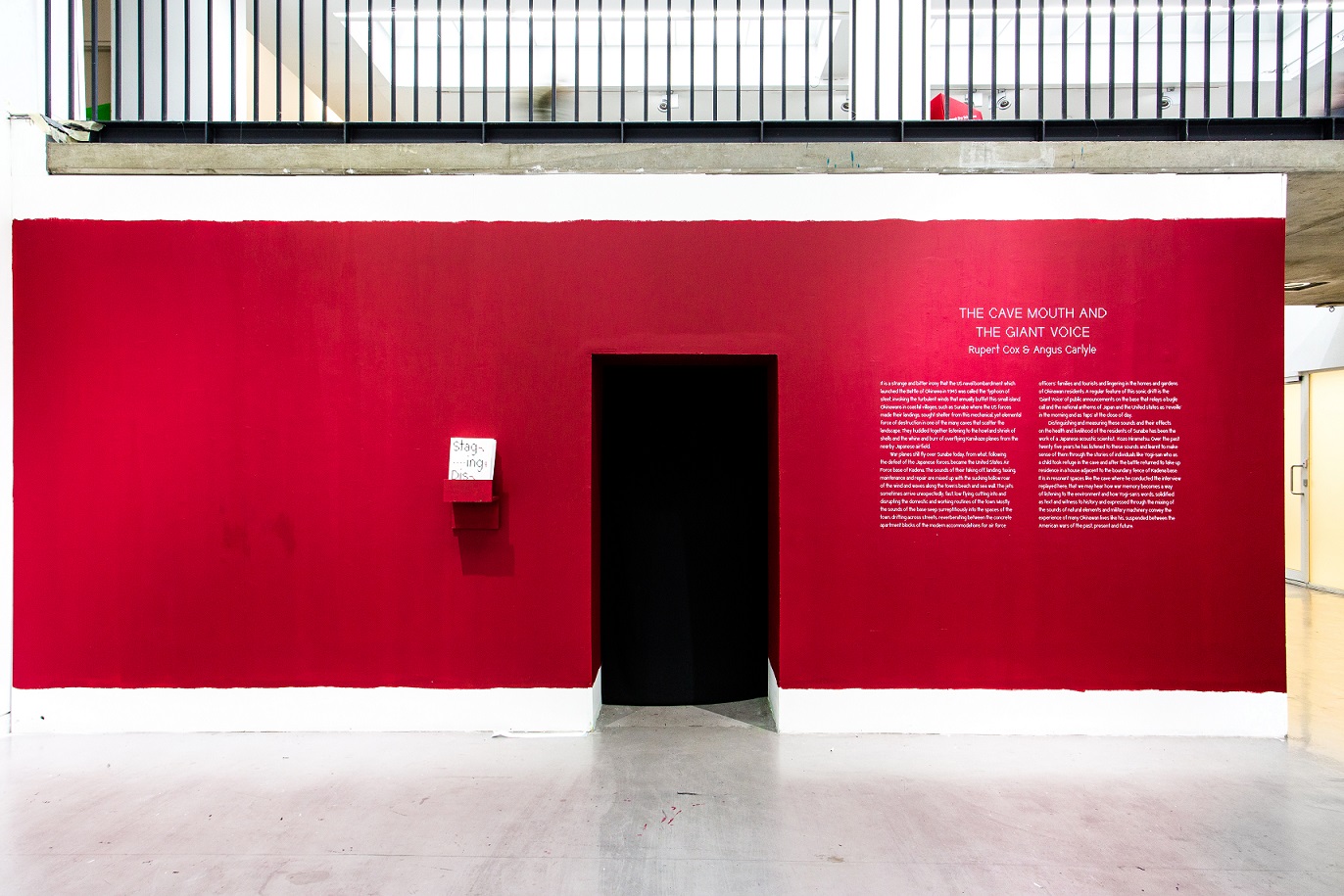Our photography and sound arts exhibition Staging Disorder is open until Thursday 12 March, and explores ideas of the ‘real’ in relation to modern conflict.
We asked exhibiting sound artist and Co-Director of CRiSAP (Creative Research into Sound Arts Practice) Angus Carlyle to tell us more about his work.
Can you tell us a bit about your contribution to Staging Disorder?
The Cave Mouth and The Giant Voice is a collaboration between myself and the anthropologist Rupert Cox. Installed in a dark space beneath the bridge across the Well Gallery, the work centres on a cave under the town of Sunabe, on the island of Okinawa.
It was here that Yogi-San sheltered from the US naval bombardment and it was here where he took us to tell his story.
That story is relayed in projected subtitles and by a composition of environmental sounds that connects the cave and Yogi’s memories of its past to the present day and the audible American military presence.
What drew you to tackle the subject of staged conflict?
In a sense, The Cave Mouth is a sketch for a sequel to our previous project called Air Pressure.
Air Pressure focused on an organic small-holding that is now almost engulfed by the architecture of Narita Airport near Tokyo but remains home to the last farming family of the many who settled in the area in the aftermath of WWII and created rich arable land out of what once was forest.
Among other things, Rupert and I are interested in how lives can be lived in intense environmental circumstances, how the present might be connected to the past and how sound can make these complex realities audible.
What responses have you received to the work you are showing?
Among the various words I’ve heard used to describe The Cave Mouth have been “heavy”, “disturbing”, “harsh”, “delicate”, “meditative” and, dismayingly, “interesting”.
Quite a number of people have commented on how the work recreates the atmosphere of the dripping cave and our walk across the lagoon with some night fishermen.
Others have talked about the pace and rhythm of the subtitles or have spoken of how the sounds within the installation blur and blend with the noises bleeding in from outside.
What are you currently working on outside the College?
Rupert is currently writing a book for Bloomsbury Press – The Sound of the Sky Being Torn – which is an historical ethnography of military aircraft noise.
I am completing various parts of a long-term project based on the Picentini mountain range in Southern Italy, with an album of environmental sound recordings and several texts to be published in the summer.
Over the next two years we will both be collaborating on a new soundfilm that explores more of the island of Okinawa, working with the acoustic scientist Kozo Hiramatsu and the media artist Atsushi Nishimura.
What do you think is the effect of holding an exhibition like this at LCC?
We are very lucky at LCC to have such a vibrant and active programme of exhibitions. Even outside the degree show season there is always work to listen to and to see; and this is not just in the main gallery spaces but also in PARC, in the library and in the screenings organised by the Documentary Research Forum.
Having said that, the very scale of Staging Disorder, how it has been curated and designed, how it shifts between different media, and how it inhabits the College, makes it a particularly powerful presence. I hope it inspires and provokes.
What advice would you give to current LCC students?
I find it difficult to answer your question. The phrases that are on the tip of my tongue are things our students already know well in their hearts and demonstrate in their practice.
Can I wriggle out of a direct response by offering a quotation from the artist Robert Irwin that the LCC alumnus Dan Holdsworth recently sent me? Irwin, a visual artist whose later work involves interventions that alter the perception of space, recommended that:
“For the next week, try the best you can to pay attention to sounds. You will start hearing all these sounds coming in. Once you let them in, you’ve already done the first and most critical thing, you’ve honoured that information by including it. And by doing that, you’ve actually changed the world.”


